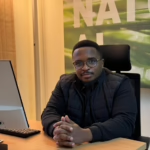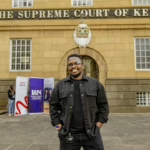Central Bank Governor Dr. Patrick Njoroge/ CBK
NAIROBI Kenya, Dec 16- Kenya’s financial inclusion rate has grown marginally to 83.7 percent in 2021 up from to 82.9 percent last year, the slowest growth in the past five years.
The World Bank defines financial inclusion as means that individuals and businesses have access to useful and affordable financial products and services that meet their needs – transactions, payments, savings, credit and insurance – delivered in a responsible and sustainable way.
The 2021 FinAccess Household Survey by the Central Bank of Kenya (CBK), Kenya National Bureau of Statistics (KNBS) and FSD Kenya attributes the slow growth to reduced uptake of mobile money during the review period.
According to the report, the growth in mobile money uptake was a paltry two percent compared to eight percent in 2019, 9.8 percent in 2016 and 33.7 percent 2013.
The main barriers to greater financial inclusion in Kenya, according to the report, are proximity to financial providers, level of trust of financial providers, excessive documentation, financial literacy and the cost of accessing financial services.
”While financial barriers have persisted over the last decade, the advent of mobile-based financial services has transformed financial systems in Kenya, helping more people to access financial services,” the report stated.
The survey notes that the 11.7 percent of the population which is still excluded from access to formal financial services are mainly in rural areas.
The survey revealed that mobile money agents present a potential solution to many of the barriers to closing the financial inclusion gap and reaching the excluded.
Financial health for most families worsened at 74 percent during the period under review after Covid-19 disrupted the social-economic fabric, with at least 53.5 percent of families surveyed having gone without food at some point compared to 33.3 percent in 2019.
At least 67.1 percent of families sampled experienced financial shocks during the research period compared to 36.2 percent in 2019.


















